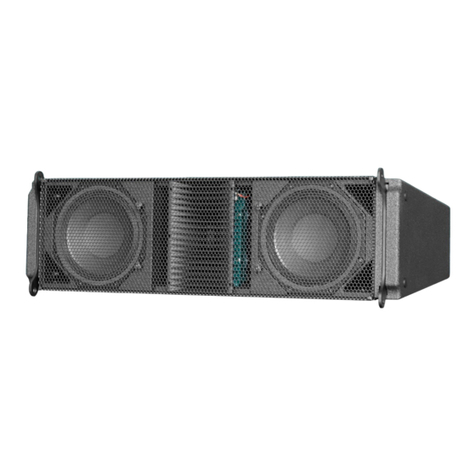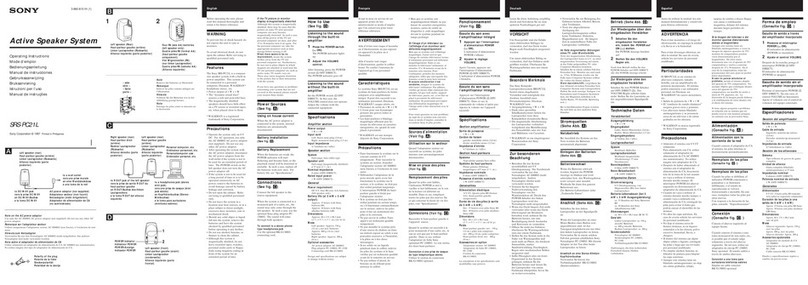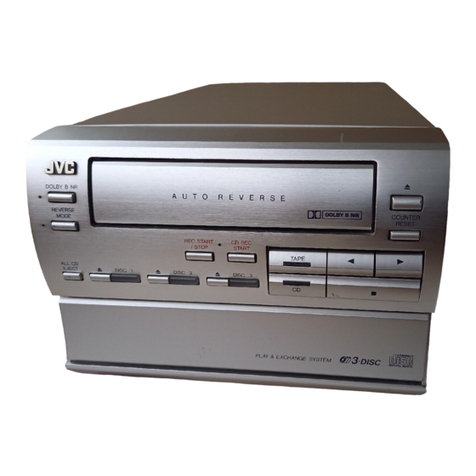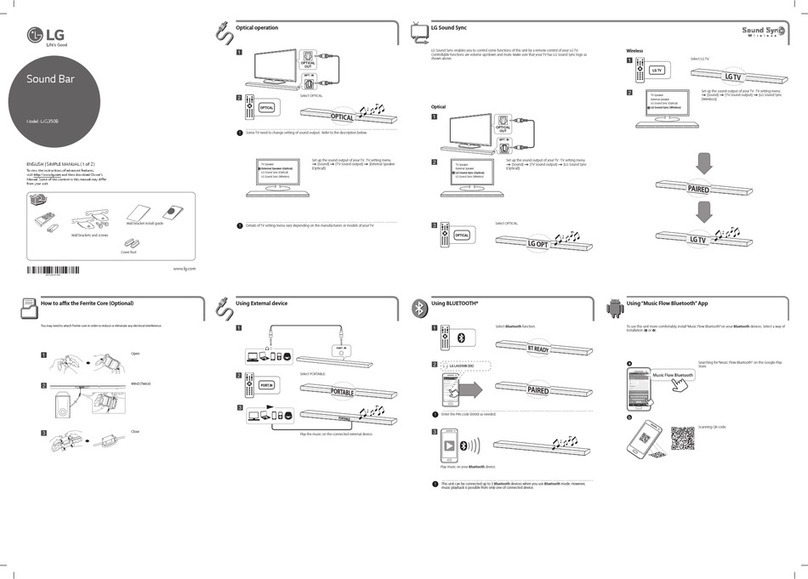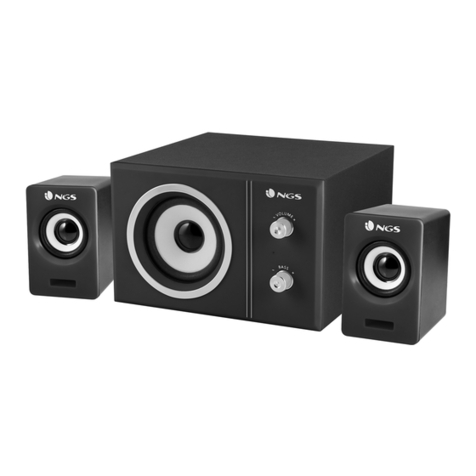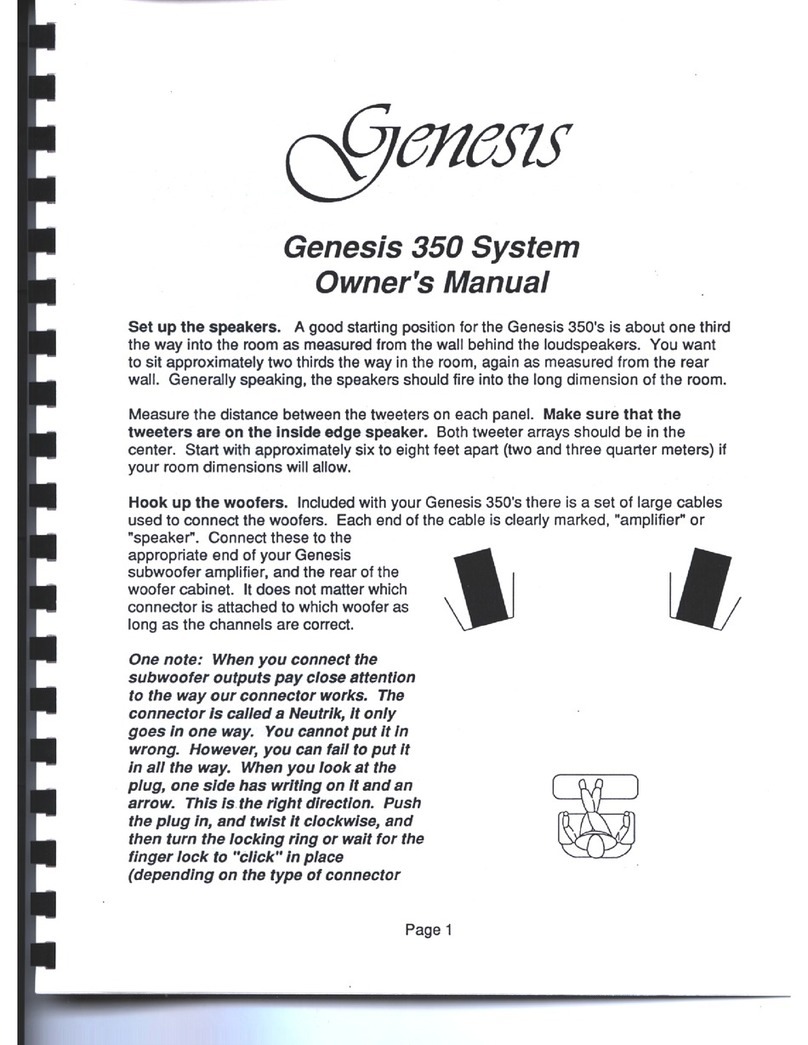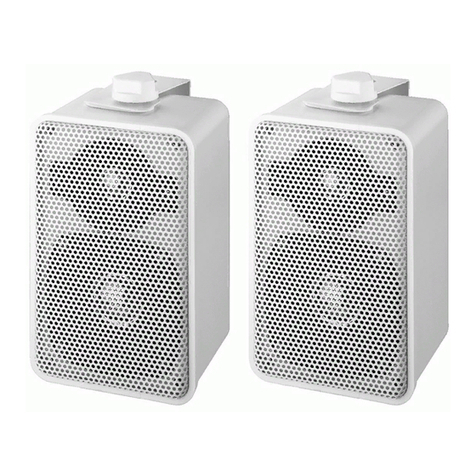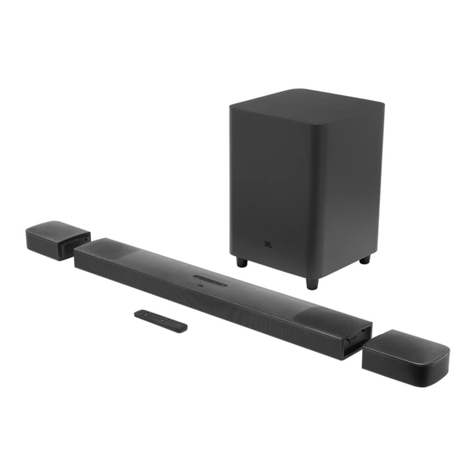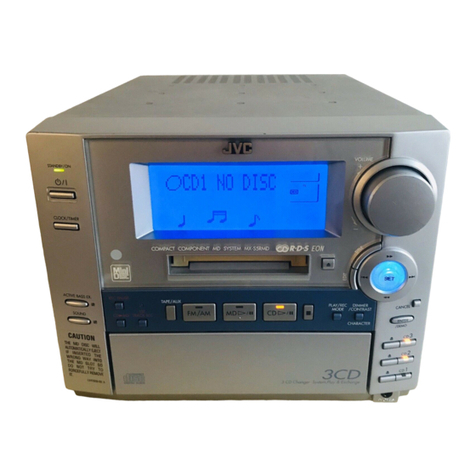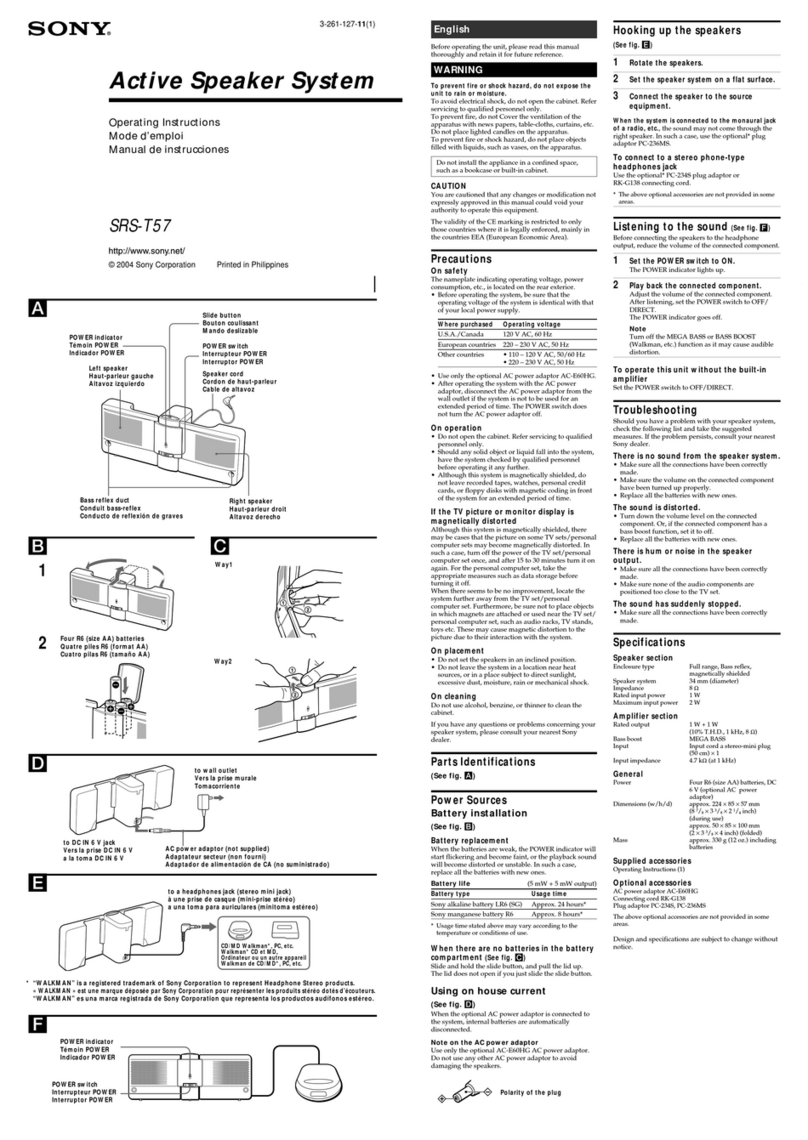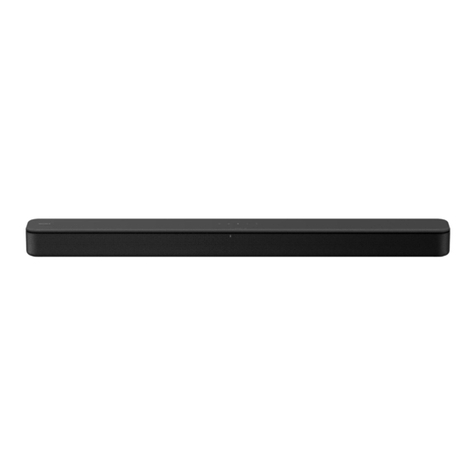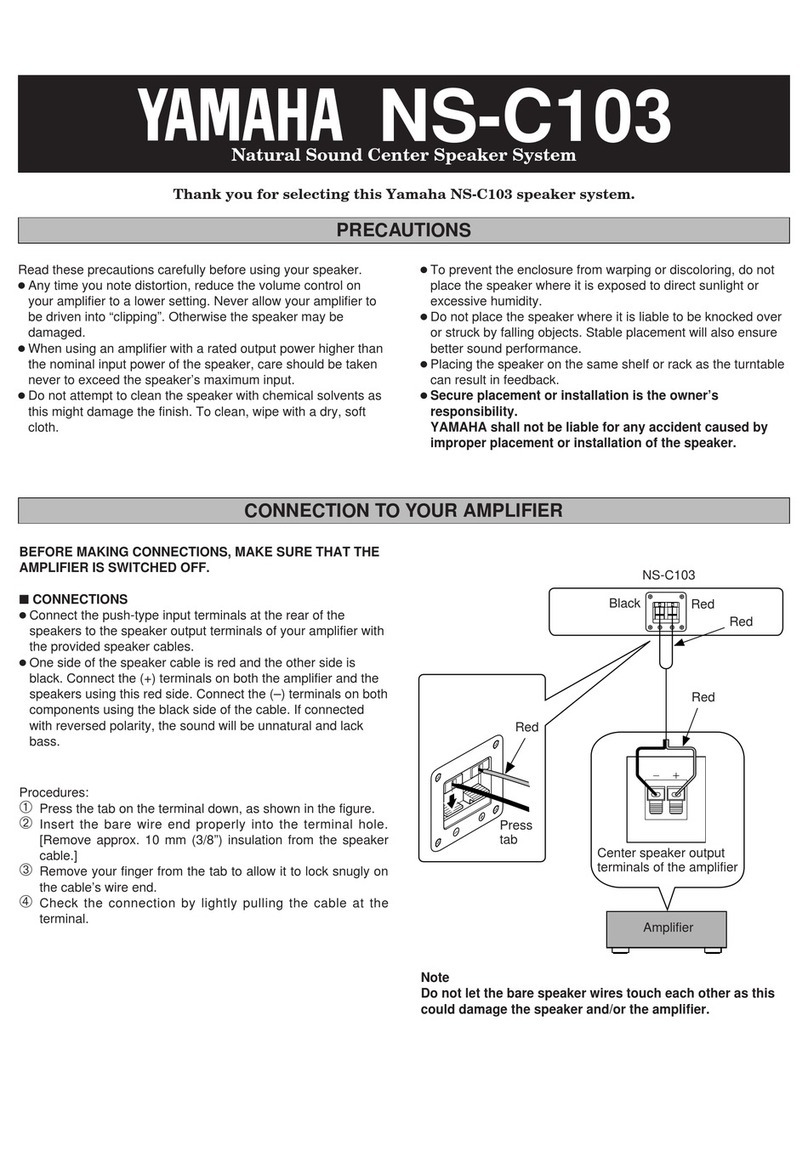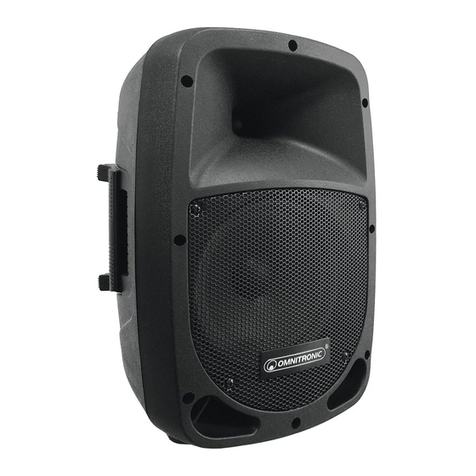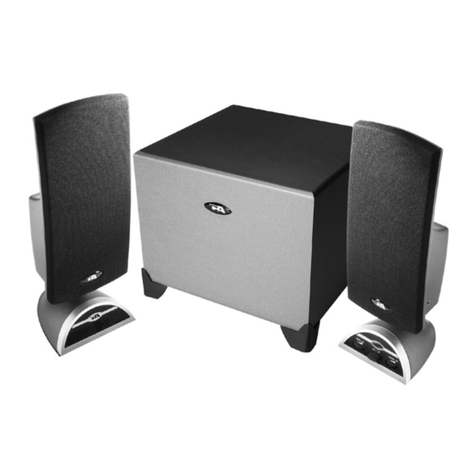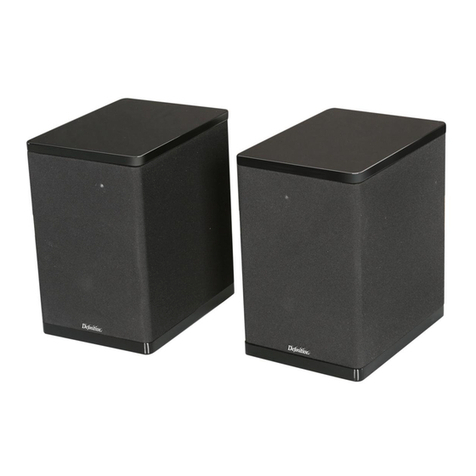Decware Project-X FRX User manual

O W N E R S M A N U A L
Decware / High Fidelity Engineering Co. East Peoria IL USA www.decware.com
The Full Range
Project-X Loudspeaker
MANUAL NO. 02 REV. DATE: 7/2011
MODEL-FRX

INTRODUCTION:
The FRX drivers are designed for open baffle applications employing low power amplifiers. The
driver is 8 inches and has a full range response.
They are hand made and therefore very limited production drivers with superb frequency
balance that has been made possible by electromotive coupling. Electromotive coupling is a
magnetic circuit that has been tuned to offer spectacular performance within a narrow power
window. Put another way, these speakers are not meant to reach party listening levels, instead
they were designed for intimate listening at sane volumes. Exceeding this volume restriction
will result in completely harmless, but nonetheless objectionable, distortion. You’ll quickly
know when you are over driving them because they’ll tell you. The distortion is in the magnetic
circuit itself, not the physical speaker. We designed the magnetic circuit to handle about 7
watts, whereas the physical speaker can handle 30 watts. Naturally if you use an OTL or Solid
State amplifier that faults and puts DC voltage on the speaker, it will fry the FRX without
hesitation just at it would any speaker.
INSTALLATION
The FRX driver can be installed at any angle without effecting performance. The binding posts
on the rear of the driver accept up to 8 AWG wire, SPADES or BANANA jacks. In open baffle
applications is it recommended to hook your speaker cables directly to these binding posts.
AMPLIFICATION
The ideal amplifier for these drivers is a 6 watt per channel TRIODE amp with no negative
feedback. The perfect amplifier is our Zen Torii push pull amplifier because it adds substantial
weight to the lower frequencies, and has an adjustable treble control so you can flatten out the
highs in any room.
ENCLOSURE
The perfect enclosure for these drivers is the DECWARE Zen Open Baffle (ZOB) of which plans
are available on the web site, www.decware.com. A picture of the ZOB enclosure design is
shown in the back of this manual.
O W N E R S M A N U A L
Decware / High Fidelity Engineering Co. East Peoria IL USA www.decware.com

PRINCIPLE OF OPERATION
O W N E R S M A N U A L
Decware / High Fidelity Engineering Co. East Peoria IL USA www.decware.com
The varying current entering the FRX motor
from your amplifier creates a varying magnetic
flux in an air gaped grain-oriented silicon steel
laminated core via a primary coil winding and
thus a magnetic field through a secondary
winding is developed.!This varying magnetic
field induces a varying electromotive force
(EMF) in the secondary winding called mutual
induction. Once this secondary winding is
properly tuned with a resistive load, AC
current is allowed to flow through this air-
gaped circuit via the primary and out to the
voice coil.!Since the EMF at a given flux
density increases with frequency, the
secondary (tuning coil) absorbs the artificial
rise in response and ringing caused by the
high strength motor assemblies used in this
type of low mass driver.!Despite
appearances, when the tuning load is
removed no current can flow to the voice coil.!
This exotic approach to magnetically coupling
current from the amplifier to the voice coil is
what gives the FRX it's uniquely smooth and
highly present sound.
This approach works by designing a driver
that is over the top in high frequency
projection and then offsetting it with
electromotive force.!The result is smooth
linear response without loosing the hyper
speed and insane detail that comes from the
overly strong neo magnet.
The FRX design also brings significant if not
profound improvements to the overall phase
angle and sense of timing and pace when
compared to normal drivers. I believe it is part
of what brings absolutely lucid imaging to the
table when a pair of these are used with good
tube amplification

FRX in Zen Open Baffle - FREQUENCY RESPONSE
FULL FREQUENCY RESPONSE Shown in Blue.
(15,30 degrees) OFF AXIS taken from 200Hz to 20KHZ.
Mic distance 12 inches.
FRX in Zen Open Baffle - IMPULSE RESPONSE
Measured in
ZEN OPEN BAFFLE ENCLOSURE
with TORII MKIII amplifier using voice coil feedback and treble control adjusted for flattest response.
O W N E R S M A N U A L
Decware / High Fidelity Engineering Co. East Peoria IL USA www.decware.com

DRIVER FREQUENCY RESPONSE
Since it is unlikely everyone using FRX drivers will have our enclosure and
amplifier we sent the FRX driver by itself to an independent lab to be measured
according to industry standards on an IEC baffle. These results will give you a
more accurate comparison between the FRX and other drivers on the
marketplace.
The chart above is from 200 cycles to 30,000 cycles. Note the response is closer
to our in-room measurement (green line) in the previous page.
O W N E R S M A N U A L
Decware / High Fidelity Engineering Co. East Peoria IL USA www.decware.com

Note that the graph above is the impedance of the FRX driver with and without it’s magnetic
coupling transformer.
Harmonic distortion is from 200 cycles to 20,000 cycles.
O W N E R S M A N U A L
Decware / High Fidelity Engineering Co. East Peoria IL USA www.decware.com

Phase is displayed from 200 cycles to 30,000 cycles.
O W N E R S M A N U A L
Decware / High Fidelity Engineering Co. East Peoria IL USA www.decware.com

O W N E R S M A N U A L
Decware / High Fidelity Engineering Co. East Peoria IL USA www.decware.com

IDEAL FRX CABINET
Below is an illustration of the Zen Open Baffle cabinet design that we recommend for use with
the FRX driver if you’re trying to get full range response without bass augmentation from
additional drivers or subs.
O W N E R S M A N U A L
Decware / High Fidelity Engineering Co. East Peoria IL USA www.decware.com

Shown fully assembled below, the ZOB is available fully finished from the Decware web
site and for the D.I.Y. guys and gals, plans are also available.
BREAK-IN
Regrettably this driver has an unusually long break-in period of 3 weeks with 24 hour
operation at normal listening levels. That’s 504 hours total time before the FRX will
sound it’s best.
The reason for this lengthy break-in is because the FRX not only has the cone and
suspension that has to break-in but also has the magnet circuit that also has to break-
in.
During the break in process, the sound is less than stellar. Please be advised. Steve
Deckert can be quoted as saying he thought he had made a huge mistake during the
first couple weeks, so it’s likely you will too.
O W N E R S M A N U A L
Decware / High Fidelity Engineering Co. East Peoria IL USA www.decware.com

SPEED and DISTORTION
Next to direct-coupled servo-charged electrostatics, the FRX is one of the fastest and
most phase coherent drivers we’ve heard. The speed is disarming and takes a long
time to get used to. In particular, you will notice that when there is any distortion in the
recording, or the amplifier, YOU WILL HEAR it so well, you’ll think it’s the FRX driver
that’s actually distorting when it’s often not the case.
WARRANTY
The FRX drivers are warrantied against any defects in material and workmanship that
effect their performance for a period of 5 years. Things that are not covered under
warranty are scratches, dirt or debris in the voice coil gap, tears or dents in the cone,
damaged wires and or burnt voice coils.
All warranty claims will require a phone call prior to shipping us the drivers so we can
issue an RA number and go over packing details. Anything that comes in without an
RA number or proper packaging will be sent back.
DECWARE / High Fidelity Engineering Co.
75. S. Riverview Dr. East Peoria IL 61611 USA
(309) 822 5255
O W N E R S M A N U A L
Decware / High Fidelity Engineering Co. East Peoria IL USA www.decware.com

Designer’s Note:
When the FRX driver was originally released I published the following frequency response:
I said I’d never seen anything this good and commented that it seemed too good to be true...This
response turned out to be a glitch in the measurement software. After sending the driver to an
independent lab I noticed that I had a very similar response to theirs at the 1ms mark on the waterfall
plot below:
O W N E R S M A N U A L
Decware / High Fidelity Engineering Co. East Peoria IL USA www.decware.com
Their measurement
Similar measurement

It then became obvious that there was a 1ms delay in the measurement software causing it to read the
response just before the stimulus signal. Even though I thought it was awfully good response, I also
knew the measurement system was working because of the waterfall plots and a myriad of other
reasons. And what I was hearing was unusually smooth which helped to confirm it. So I guess the joke
was on me.
But keeping it all in perspective, a speaker has many frequency responses. The response depends on
where the microphone is placed. The response it measures at 1 foot or 1 meter is certain to be what you
DON’T hear unless you listen at that distance. At an average of 12 feet away from the speakers it has
taken about 13.2 milliseconds for the sound to travel from the speaker to your ears. As it travels through
the room it is modified by the room and the natural dispersion patterns of the speaker. If you look below,
13.2 milliseconds is just where the color starts to turn yellow, which short of a little peak at 10K is fairly
smooth. This is what you actually hear.
So adjusting the software for the 1ms delay I was able to publish what I’m sure is a far more accurate
response and it is very similar to the independent lab’s IEC baffle measurements. Sorry for any trouble
this has caused, it wasn’t intentional and I was able to delay production until this got resolved.
Steve Deckert
O W N E R S M A N U A L
Decware / High Fidelity Engineering Co. East Peoria IL USA www.decware.com
Table of contents
